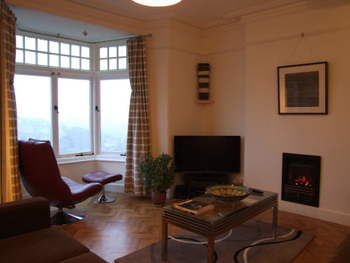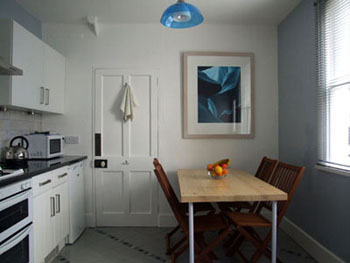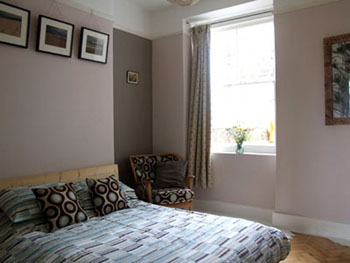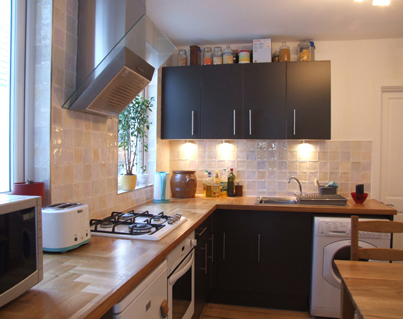Interior Design for Holiday Letting
During these times of economic restraint businesses need, more than ever, that little extra something to tempt back their customers, and this is particularly true of the holiday industry.
Consumers today have pretty exacting standards when it comes to the places they stay for their holidays, so it’s fair to say that the interior design of guest houses, hotels and holiday apartments/cottages is a very important factor to consider. No longer are we satisfied to book our summer holidays or weekends away at that gorgeous country retreat, only to find on arrival that the owners have furnished their cottage with grandma’s old sofas and the rickety bunk beds the kids have grown out of!
So what is the answer?
Well, you could engage the services of an interior designer to help you out.
You would be forgiven for thinking that this means more expense at a time when you can least afford it, and this is a valid point. It’s a fair assumption to make that in using a designer you are handing over your ideas and budget to someone who may select expensive top ‘designer’ furniture and pay no heed to your wants. However this is not the case – a good designer should listen to the client’s brief, adhere to what the client wants, advise on the practicalities and steer clients in the right direction to avoid any costly mistakes being made.
So assuming you employ an interior designer the next questions are:
‘Why is it so important that the interiors are designed? Isn’t it just ok to give the place a lick of paint, make sure it’s warm, clean & safe, and perhaps invest in a new sofa?’
The answer is: yes, sure this is ok, if ok is all you want to be. But if you want that competitive edge, and something that makes your guests want to return year after year, then a beautifully decorated and furnished place that is warm, safe and comfortable and adds that ‘little extra’ surely is far better.
Think of all the places you have stayed, and what it was you liked about them. With regards to holiday cottages or apartments, its great to make them personal, and convey something about you, the owner, but the worst thing you can do is to have too many trinkets and fussy ornaments around – these only get broken and are a pain to clean around during the change-over day!

Sam’s Place holiday flat; St Ives
With pictures on the wall, its far better to have just one or two good quality large prints or paintings than lots of small cheaply framed bad quality prints. We’ve all seen them, those tired water colour prints of faded seaside scenes.
A welcome pack that includes tea and coffee and a lovely vase of fresh flowers is a far better offering and makes a bolder statement than tacky trinkets and long-life milk cartons!
Keep rooms simple and clear of clutter – for example, in living rooms (as long as they are on ground floors) think of hard floors, such as wood or tiles, topped with rugs that are easier to clean, rather than wall-to-wall carpets that get easily soiled and harder to keep clean. And don’t go over board with patterns. It’s a myth that patterned carpeted floors are better because that don’t show the dirt – they do get dirty, but also they often suck the light out of places, and very quickly look dated and tired. A wood floor can be re-polished annually and keep up that lovely fresh new look.
Keep walls clear of clutter and avoid too much busy patterned wallpaper. It’s good to make a statement on one wall with colour or a nice bold wallpaper, but then keep the remaining walls plain, and avoid harsh strong colours. Soft and calming, whilst also light and airy are good moods to aim for in the decor. Accent colours can be used in the smaller things such as scatter cushions and window blinds.
Bedrooms should be simple, but cosy and warm. Carpets are good in bedrooms, as long and they are a good quality and respond well to cleaning and maintenance. A textured finish is good, but again an overall plain colour, maybe with a small fleck. Velvet plush carpets look lovely, but just aren’t practical for the holiday letting business, so best avoided. A suitable alternative would be wood floors with bedside rugs.

Andy’s Place holiday flat: St Ives
The other key to gaining impact on your guests’ arrival is to dress the beds properly – ironed bed linen and some bright cheerful scatter cushions make a big difference to the look of the bedroom. And as with the living areas, don’t have too many small cheap pictures on the wall – again, one statement piece is much better.

Andy’s Place holiday flat, St Ives.
These are not, however, hard and fast rules that must always be adhered to, and this is where a designers training and experience comes in to play. When contemplating the use of a space, a designer will be able to think in three dimensions, and come up with alternative planning solutions for rooms. There may well be a solution for putting an en-suite bathroom creatively within a bedroom, thus creating more added value to the holiday let. Or there could be unused space where useful storage could be built-in, or even an additional bedroom. A corridor could be opened out to create a more open and bigger living space. These are all elements an interior designer is trained to think of, and also able to produce 3D visuals for, thus enabling their clients to see the vision as well. Many people will be aware that a lot retail and DIY stores these days offer 3D rendering as an aid to selling their furniture, but that is all these tools do, whereas a designer will have far more sophisticated drawing software that not only shows furniture layouts, but also will show the possibilities for structural changes to your building and far more detailed interior finishes. And remember, additional bedrooms and bathrooms mean the difference of a higher tariff that you, the business owner, can charge.
Another thing to think about, and is certainly a very important current issue, is the possibility of recycling and utilising old furniture. You may well have a lovely old sofa that you don’t want to get rid of, but it has worn out and dated upholstery fabric. It may well be a cost effective solution to have it recovered in a newer more suitable fabric – but remember that all upholstery has to meet with current fire regulations! Interior designers are up to date with regulations and will be able to advise you accordingly. Likewise you may wish to use other old furniture you have and don’t want to get rid of. These don’t have to be discarded just because they are old and second hand. The trick here is to be able to have an eclectic mix, but that it should still look like it is all meant to go together – again this is where a designers experience is invaluable, it’s a fine line between ‘eclectic mix’ and ‘chaos’!
Finally a word on lighting: don’t forget the lighting! Mood lighting for the lounges and bedrooms is very important. Think of having low level lighting in the form of lamps, as well as a ceiling fitting for immediate light. In the kitchen and bathrooms you need task lighting as well as general lighting, and it’s important to ensure you have the right sort of fittings with the correct IP ratings for the relevant areas.

Sam’s Place, holiday flat; St Ives
So, taking all this into account you may well now consider using an interior designer, and one thing to mention about this is that your designer should also oversee and manage the project for you. This is the big plus about employing someone to carry out the work for you, it means that the project will be budgeted for, all work timetabled, and on site inspections undertaken to ensure all work is carried out to specification. At the completion of a project its true that clients’ often say this aspect alone is well worth the fee you pay a designer – not only does it save on stress and heartache, but it can also save on valuable time and money.